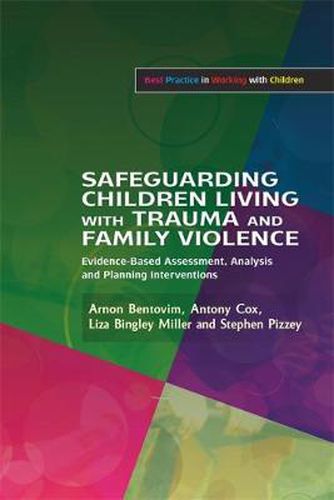Readings Newsletter
Become a Readings Member to make your shopping experience even easier.
Sign in or sign up for free!
You’re not far away from qualifying for FREE standard shipping within Australia
You’ve qualified for FREE standard shipping within Australia
The cart is loading…






Offering a systematic approach to evidence-based assessment and planning for children living with trauma and family violence, this practical book shows how to assess and analyse the needs of the child, make specialist assessments where there are continuing safeguarding concerns (using the Assessment Framework) and plan effective child-centred and outcome-focused interventions.
The authors analyse the impact of exposure to a climate of trauma and family violence on a child’s bioneurological development and on their capacity to form attachments and to develop and reflect on relationships through childhood and adolescence into adulthood. They bring together the assessment of children in need with the evaluation of significant harm and risk, and potential for rehabilitation, and also explore the application of evidence-based approaches to intervention.
This book is an essential tool for all front-line practitioners working with child protection, including social workers, child and adolescent mental health practitioners, police officers, probation workers and domestic violence organizations. It is also suitable for undergraduate, postgraduate and post-qualifying students.
$9.00 standard shipping within Australia
FREE standard shipping within Australia for orders over $100.00
Express & International shipping calculated at checkout
Offering a systematic approach to evidence-based assessment and planning for children living with trauma and family violence, this practical book shows how to assess and analyse the needs of the child, make specialist assessments where there are continuing safeguarding concerns (using the Assessment Framework) and plan effective child-centred and outcome-focused interventions.
The authors analyse the impact of exposure to a climate of trauma and family violence on a child’s bioneurological development and on their capacity to form attachments and to develop and reflect on relationships through childhood and adolescence into adulthood. They bring together the assessment of children in need with the evaluation of significant harm and risk, and potential for rehabilitation, and also explore the application of evidence-based approaches to intervention.
This book is an essential tool for all front-line practitioners working with child protection, including social workers, child and adolescent mental health practitioners, police officers, probation workers and domestic violence organizations. It is also suitable for undergraduate, postgraduate and post-qualifying students.